Why Sarong Product Photos Matter for E-Commerce
In the highly visual world of e-commerce, product photography plays a critical role in capturing a customer’s attention and influencing their purchase decision. When it comes to sarongs—an elegant, versatile, and cultural piece of clothing—product photos must convey their texture, color, flow, and styling possibilities. This comprehensive guide will walk you through every aspect of creating stunning sarong product photos for e-commerce. With over 10,000 words of insights, tips, and techniques, this blog is a go-to resource for photographers, e-commerce business owners, and aspiring professionals.
1. The Importance of Quality Sarong Product Photos
1.1 First Impressions in E-Commerce
- A high-quality product photo is often the first interaction customers have with your brand.
- Sarongs require detailed images to showcase their unique patterns, vibrant colors, and flowing material.
1.2 Building Trust Through Authentic Photography
- Clear, well-lit photos reflect professionalism and build trust with potential buyers.
- Authentic visuals help customers understand what they are buying, reducing return rates.
1.3 Why Sarongs Deserve Special Attention
- Sarongs often have intricate designs, requiring close-ups.
- They serve multiple purposes—clothing, accessory, or décor—so showcasing versatility is essential.
2. Preparing for a Sarong Product Photoshoot
2.1 Choosing the Right Sarongs for the Shoot
- Variety: Include a range of sarong types (tie-dye, batik, hand-painted).
- Condition: Ensure sarongs are wrinkle-free and in pristine condition.
- Diversity: Showcase styles that appeal to various demographics and uses.
2.2 Studio vs. Outdoor Setup
- Studio Benefits: Controlled lighting, consistent backgrounds, and fewer distractions.
- Outdoor Benefits: Natural lighting for vibrant colors and a lifestyle context.
2.3 Assembling Your Team
- Photographer: Ensure they have experience in product and fabric photography.
- Stylist: A professional stylist can enhance the sarong’s appeal by demonstrating its versatility.
- Model: Choose models with diverse body types to appeal to a wider audience.
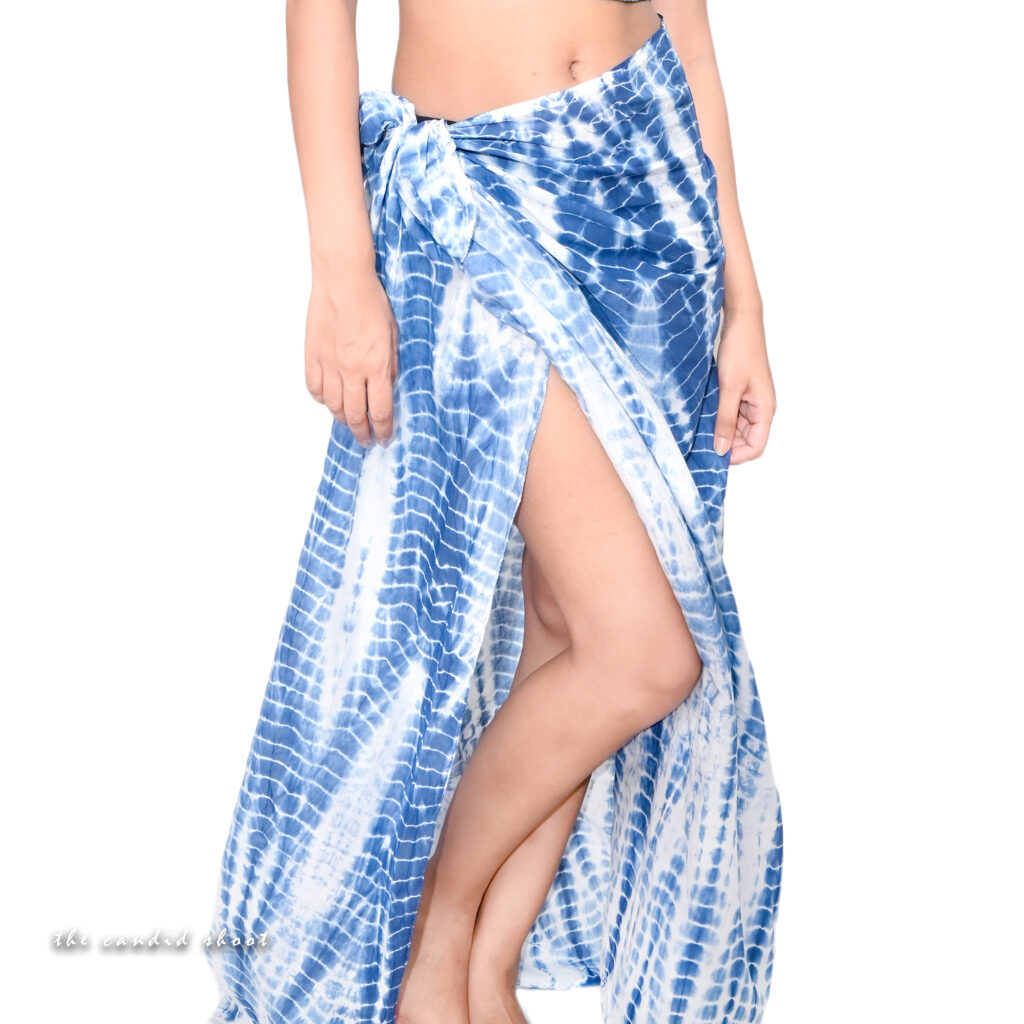
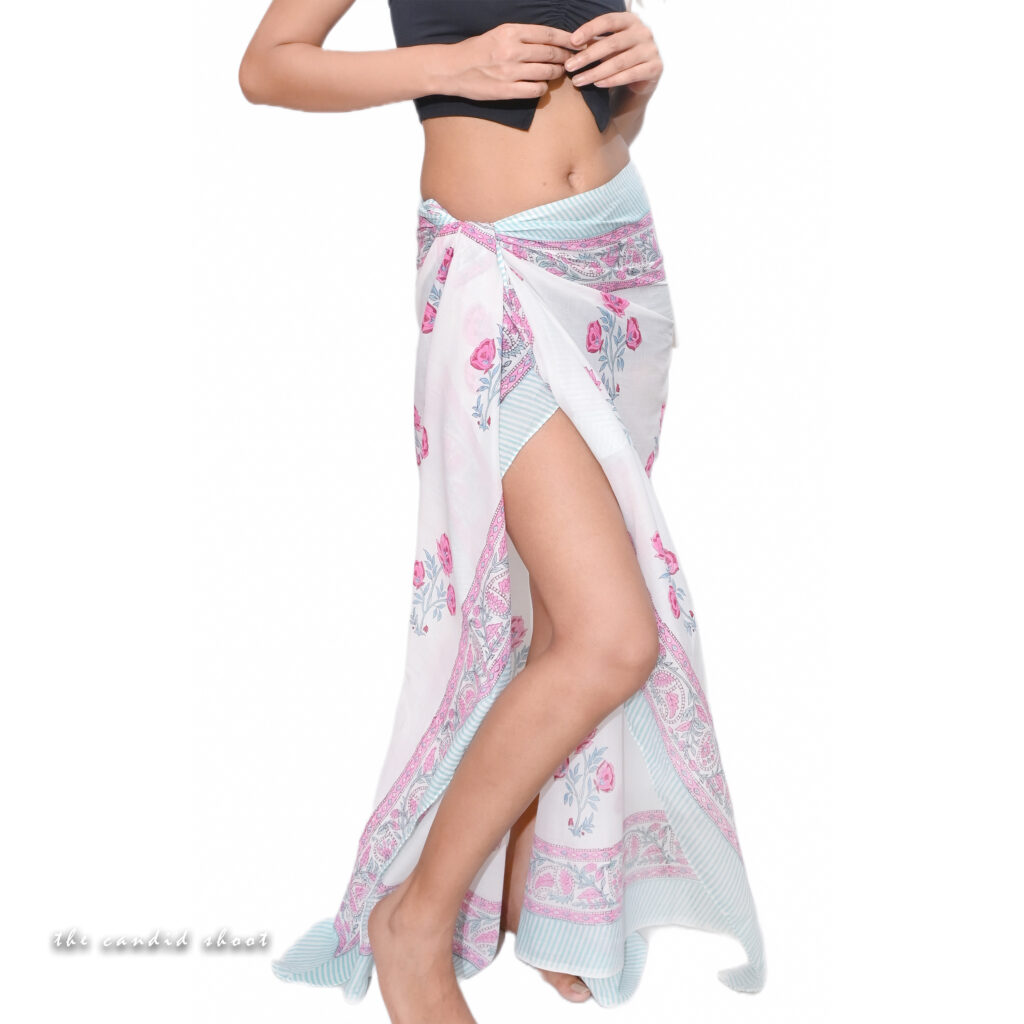
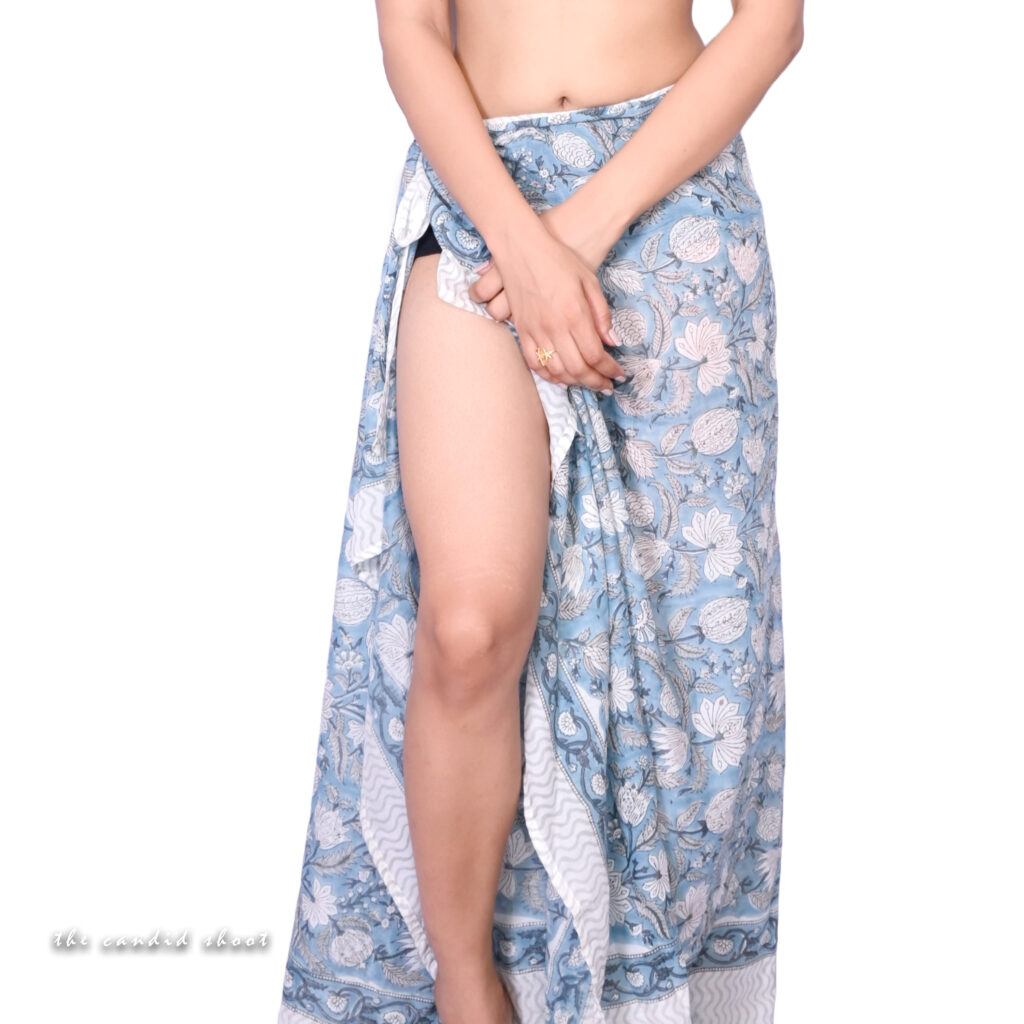
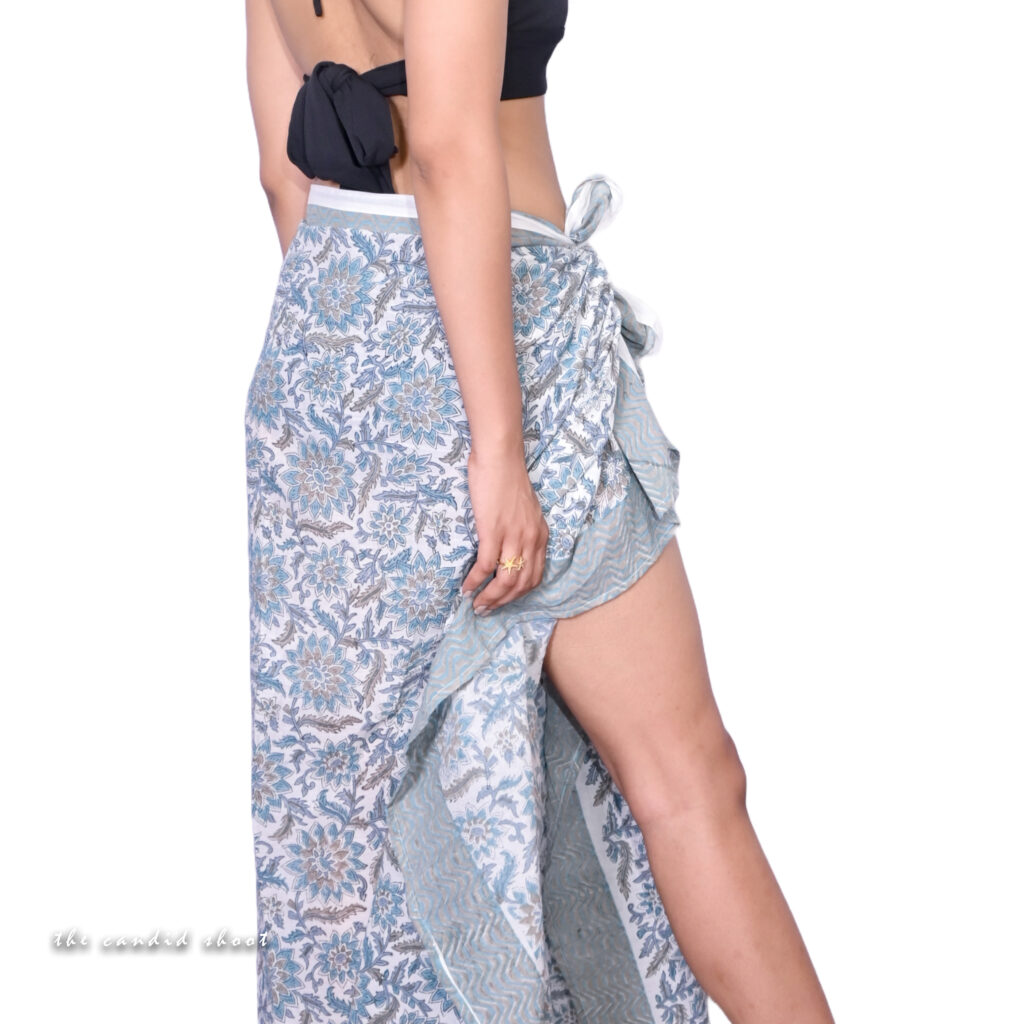
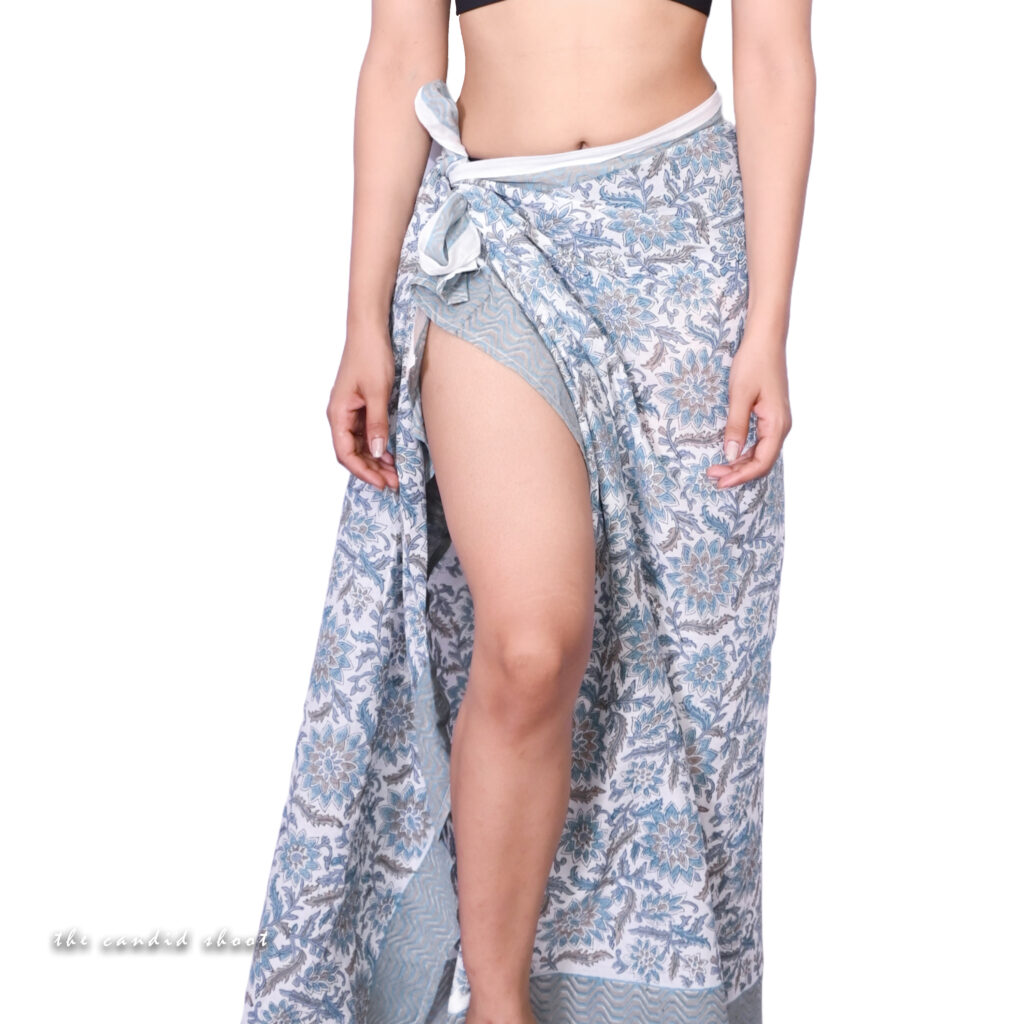

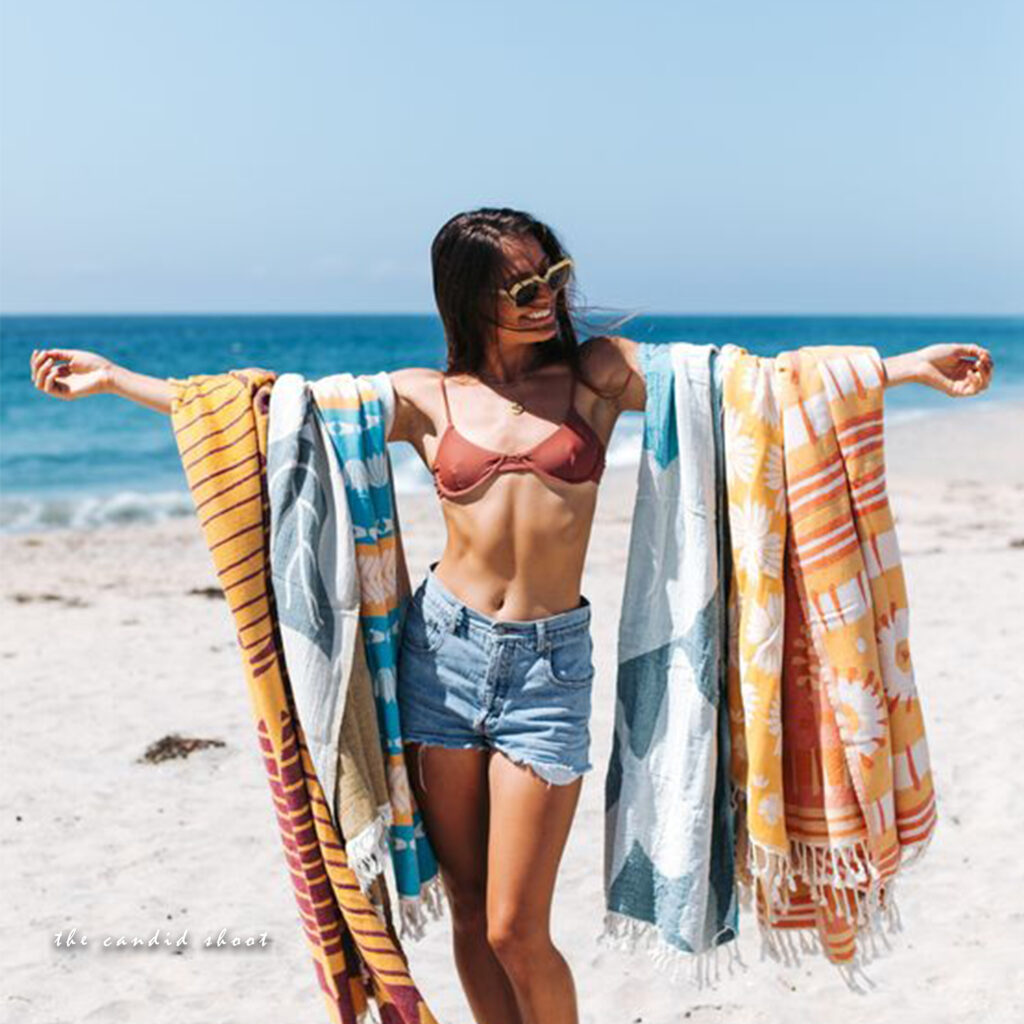
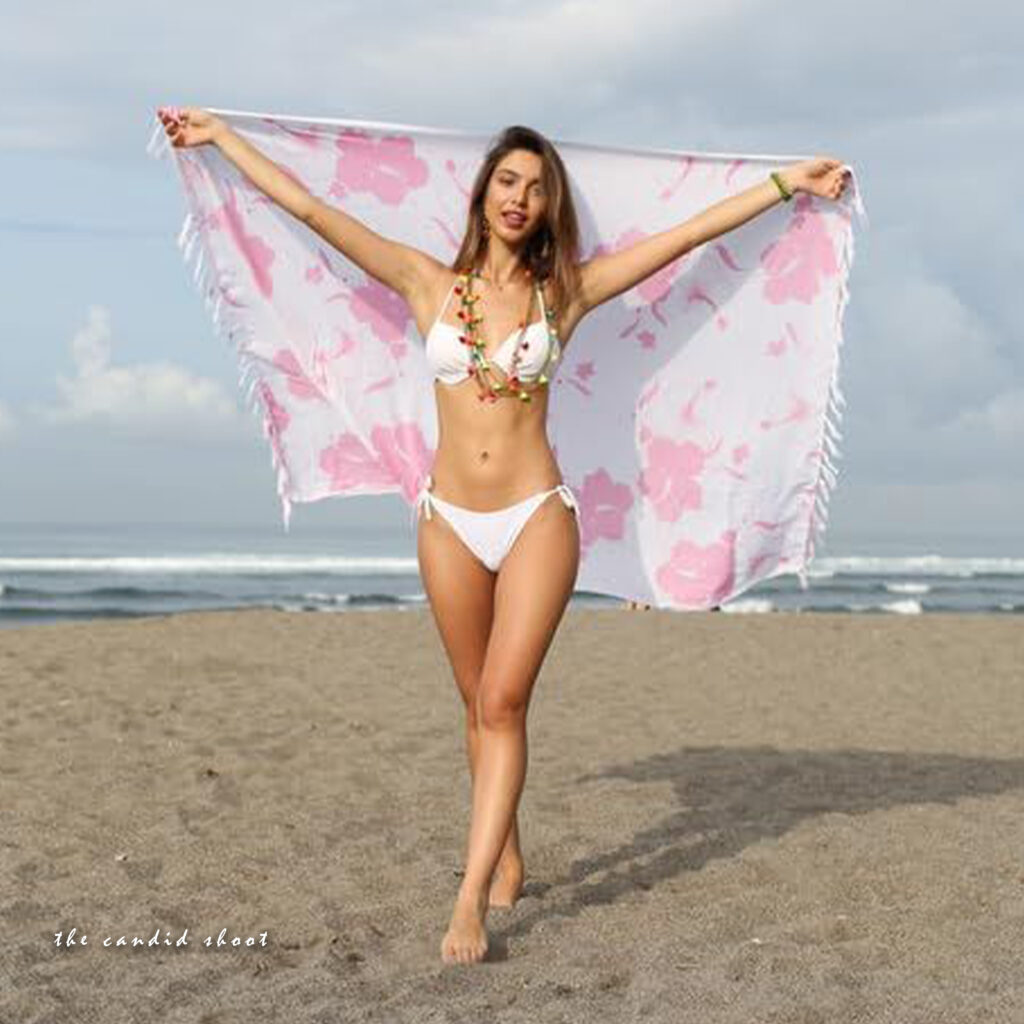
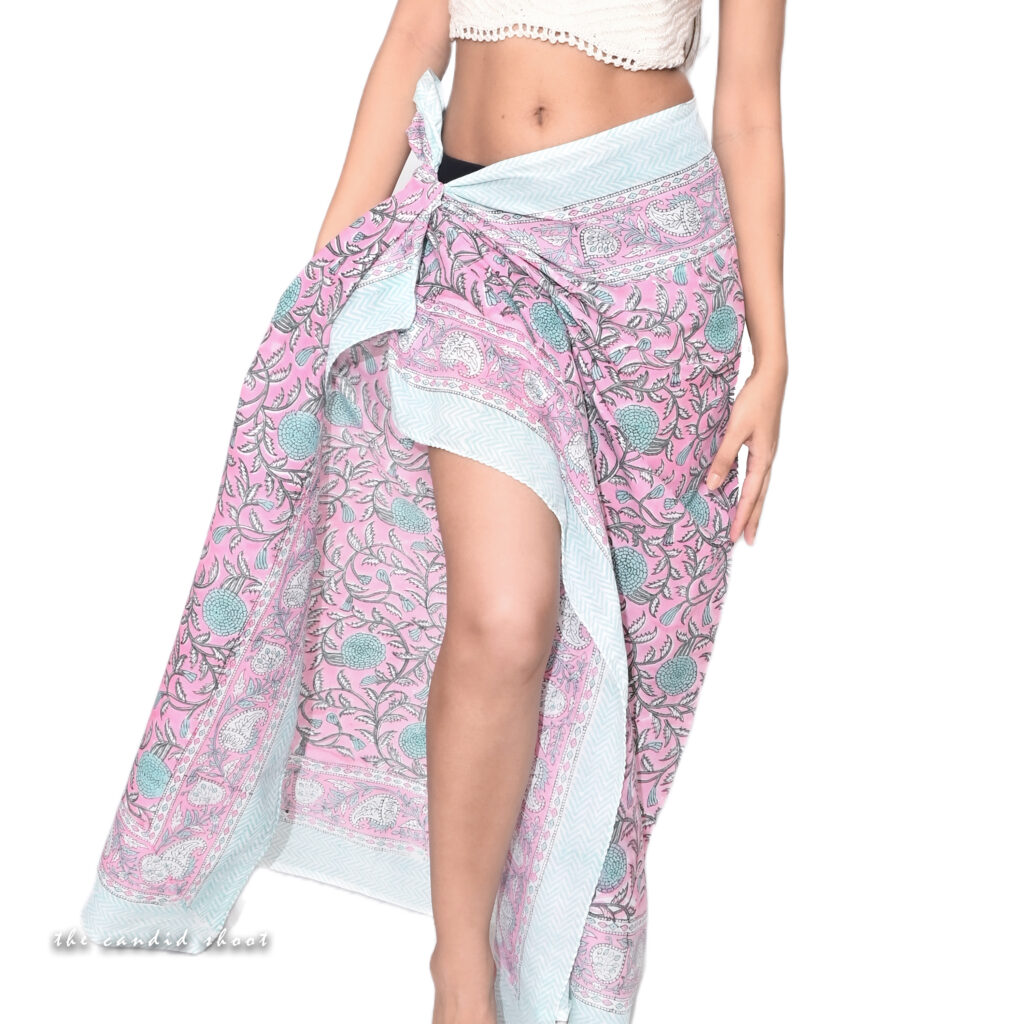
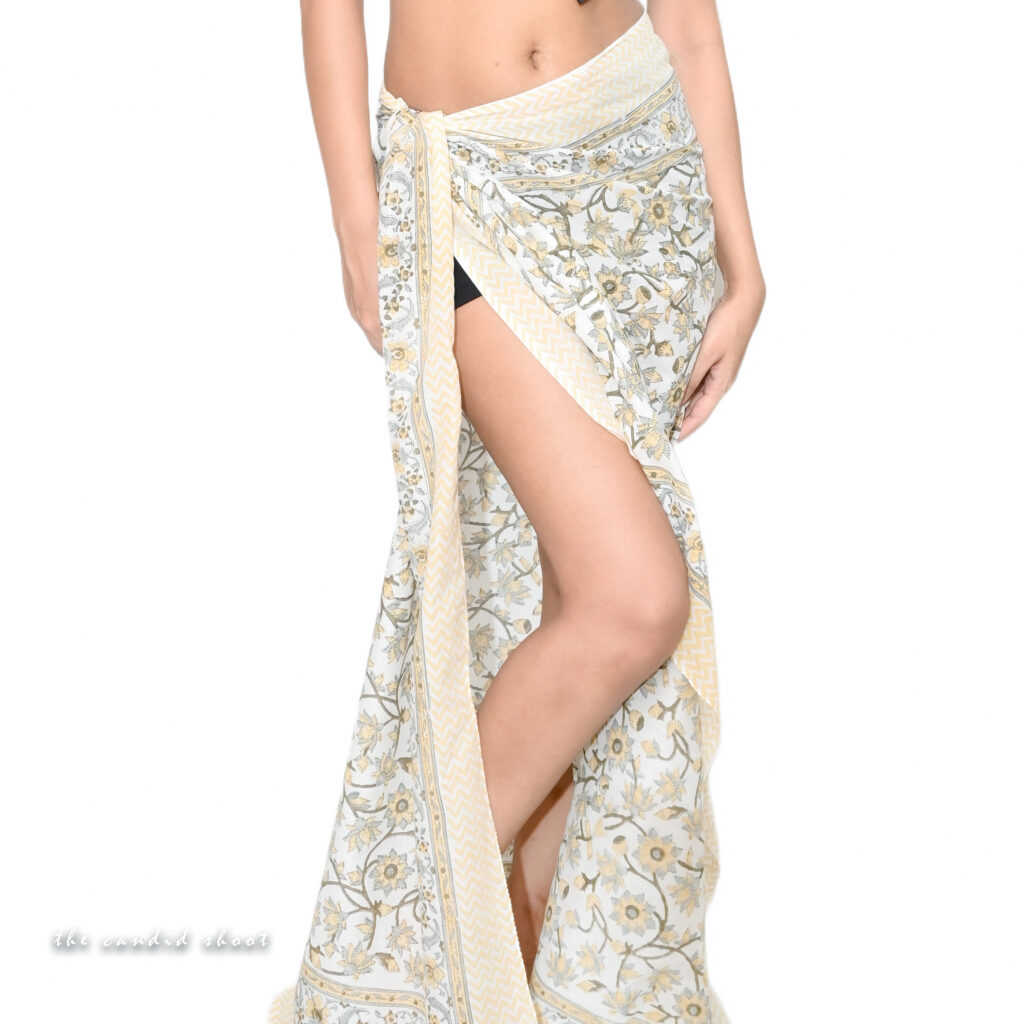
3. Essential Equipment for Sarong Product Photography
3.1 Camera and Lens Recommendations
- DSLR or Mirrorless Cameras: Provide high-resolution images.
- Macro Lenses: Perfect for capturing intricate designs.
- Zoom Lenses: Ideal for lifestyle or full-body shots.
3.2 Lighting Essentials
- Softboxes: Create soft, even lighting to highlight fabric details.
- Ring Lights: Enhance the sarong’s sheen and reduce shadows.
- Reflectors: Adjust natural light for outdoor shoots.
3.3 Additional Tools
- Mannequins or Hangers: For displaying sarongs in product-focused shots.
- Tripods: Ensure stability and uniformity in framing.
- Steamers: Keep sarongs wrinkle-free.
4. Styling Sarongs for Product Photography
4.1 Demonstrating Versatility
- As a Dress: Show how sarongs can be wrapped as a casual dress.
- Beachwear: Style sarongs as skirts or wraps for beach settings.
- Home Décor: Highlight sarongs as table runners or wall hangings.
4.2 Accessorizing for Context
- Use hats, sandals, or bags for lifestyle-oriented product photos.
- Pair sarongs with complementary clothing items to enhance their appeal.
4.3 Cultural Representation
- Respect cultural authenticity when styling traditional sarongs.
- Provide context through captions or descriptions about the sarong’s origin.
5. Posing Techniques for Sarong Models
5.1 Highlighting Fabric Movement
- Ask the model to twirl or sway, capturing the flow of the fabric.
- Use wind machines for subtle motion in studio settings.
5.2 Close-Up Poses
- Highlight intricate patterns with zoomed-in shots of the fabric.
- Focus on tied knots or styled edges for detail-oriented buyers.
5.3 Full-Length Poses
- Showcase the sarong in its entirety, from top to hem.
- Use angled poses to emphasize versatility and styling options.
6. Mastering Lighting for Sarong Product Photography
6.1 Studio Lighting Tips
- Use three-point lighting (key, fill, and backlight) to eliminate shadows.
- Opt for daylight-mimicking bulbs to keep colors true.
6.2 Natural Lighting for Sarongs
- Shoot during golden hour for a warm glow.
- Avoid direct sunlight to prevent overexposure or harsh shadows.
6.3 Reflective Techniques
- Highlight metallic or shimmer details using targeted lighting.
- Use reflectors to add subtle highlights to the fabric.
7. Composition for Eye-Catching Sarong Photos
7.1 Rule of Thirds
- Position the sarong or model off-center to create dynamic interest.
7.2 Minimalist Backgrounds
- Use plain or lightly textured backdrops to let the sarong stand out.
7.3 Incorporating Props
- Include items like beach sand, tropical leaves, or wooden accents to add context.
8. Capturing Sarong Close-Ups
8.1 Importance of Detail Shots
- Customers often want to see fabric texture, stitching, and pattern quality.
8.2 Macro Photography Tips
- Use a macro lens to highlight embroidery or unique textures.
- Focus on small details like tassels or printed logos.
8.3 Lighting for Close-Ups
- Use diffused light to avoid harsh shadows in detail shots.
9. Post-Processing Sarong Product Photos
9.1 Editing Essentials
- Adjust brightness and contrast to enhance fabric details.
- Use saturation adjustments to bring out vibrant colors.
9.2 Background Removal
- Use software like Photoshop to create transparent or white backgrounds.
9.3 Consistent Branding
- Apply similar color grading or filters for a cohesive look across your e-commerce site.
10. Common Mistakes and How to Avoid Them
10.1 Overediting
- Maintain authenticity; avoid altering colors or textures too much.
10.2 Neglecting Context
- Show how sarongs can be used or styled in real life to inspire buyers.
10.3 Poor Lighting Choices
- Always test your lighting setup before starting the shoot.
11. Showcasing Sarong Product Photos Online
11.1 Optimizing for E-Commerce
- Use multiple images per product (front, back, close-up).
- Include lifestyle shots to inspire customers.
11.2 SEO Best Practices
- Use descriptive alt text like “Hand-painted blue sarong on beach model.”
- Name image files with keywords, e.g., “red-floral-sarong.jpg.”
11.3 Engaging Descriptions
- Pair photos with detailed descriptions of fabric, size, and styling options.
12. Sarong Photography Trends in 2025
12.1 Sustainability Focus
- Highlight eco-friendly sarongs made from organic materials.
12.2 Cultural Storytelling
- Share the cultural history behind sarong designs in your photos.
12.3 Interactive 360-Degree Photos
- Offer interactive views that let customers explore the sarong from all angles.
Conclusion: Perfecting Your Sarong Product Photography
Creating stunning sarong product photos for e-commerce requires careful planning, the right equipment, and a creative approach. By mastering lighting, composition, and styling, you can produce images that not only capture attention but also drive conversions. With these tips and techniques, your sarong product photography will stand out in the competitive e-commerce market.

Sony Alpha a7 IV: The Ultimate Camera for Photography

Nikon Z5 Review: Is It Worth It?
-

Nikon Z9 : Game-Changer for Photography
-

Top Features of Nikon D850 That Make It Ideal for Portfolio Shoots
Sony Alpha a7 IV: The Ultimate Camera for Photography
Explore the Sony Alpha a7 IV in this complete 2025 review. Learn how its pro-level features, real-world performance, and hybrid flexibility make it the ultimate camera for photography across genres like portraits, weddings, travel, and commercial work. Table of Contents Section 1: Introduction – Why the Sony Alpha a7 IV Stands Out The Sony Alpha…
Nikon Z5 Review: Is It Worth It?
In 2025, photographers—whether hobbyists, content creators, or professionals—seek equipment that blends value, performance, and future-readiness. Enter the Nikon Z5, a full-frame mirrorless camera marketed as a gateway to high-end imaging without a flagship price tag. But how well does it hold up under real-world demands like studio shoots, weddings, landscape adventures, and lifestyle photography? In…
Nikon Z9 : Game-Changer for Photography
Discover why the Nikon Z9 is considered a true game-changer for photography. This in-depth Nikon Z9 review explores key features, real-world performance, and how it excels in professional photo shoots in 2025. Table of Contents 1. Introduction The photography world witnessed a significant shift with the launch of the Nikon Z9, a flagship mirrorless camera…
Top Features of Nikon D850 That Make It Ideal for Portfolio Shoots
Discover why the Nikon D850 is the ultimate DSLR for portfolio shoots. Explore its top features—from resolution and dynamic range to autofocus precision and workflow speed—that help photographers create stunning, high-impact images for professional portfolios. Whether you’re a portrait artist, fashion photographer, or visual storyteller, a portfolio shoot demands technical excellence, creative flexibility, and uncompromised…
Candid Moments with Canon EOS R10: Lightweight & Reliable
In the evolving world of mirrorless photography, the Canon EOS R10 stands out as a lightweight yet powerful camera tailored for real-life storytelling. Whether you’re photographing street scenes, family gatherings, weddings, or spontaneous portraits, capturing genuine emotion requires a responsive and discreet tool. This article dives deep into how the Canon EOS R10 excels in…
Bold Portraits with Canon EOS R5: Is It the Best for Work?
Studio photography has always demanded precision, artistry, and impeccable gear. As the expectations for commercial portraits, fashion campaigns, and editorial work continue to rise, the tools we use must evolve. Enter the Canon EOS R5, a camera that has stirred the professional waters with its impressive technical specs and forward-thinking design. In this comprehensive Canon…

